Bolos are characterized by having a native hardwood handle, a full tang, and by a blade that both curves and widens, often considerably so, at its tip. This moves the centre of gravity as far forward as possible, giving the knife extra momentum for chopping vegetation. So-called "jungle bolos", intended for combat rather than agricultural work, tend to be longer and less wide at the tip.
This is a US Engioneernig Corps Bolo fighting knife. As issued during WWI. Manufactured by the Collins company.

The design of the bolo knife is very imposing. The back of the scabbard shows the seam where the sections are sewn
together. An extra flap of leather is sewn near the throat in order to create a belt loop.
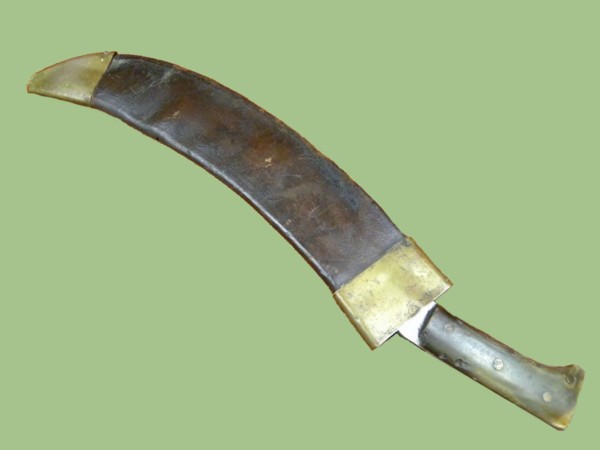
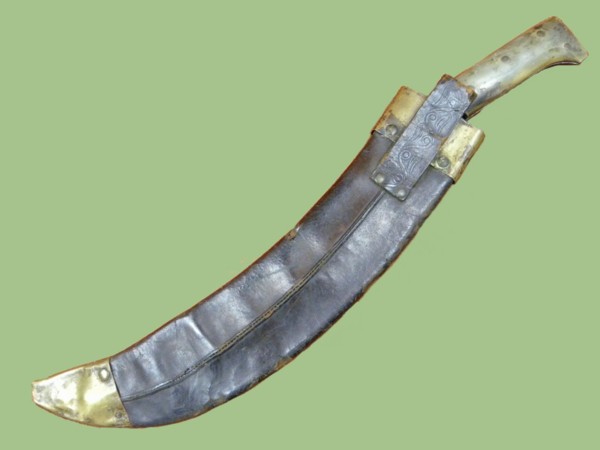
|
This page is a recognition and identification guide for military fighting knives.
Multiple detailed photos of a specific sample are provided. Descriptions point out
clearly defined points that should be noted.
One of the most commonly asked questions is "How much is my fighting knife worth?".
A price guide is included here to address this question. The value of the knives is
reviewed over a period of several years. A trend can be observed. The present worth
of the edge weapons in the collector's market is illustrated.
This service is provided free of charge to the visitor/enthusiast courtesy of
MilitaryItems.com,
a company dedicated to the preservation of military history and to providing quality
military antiques and collectibles to museums, institutions and the general public.
|
|
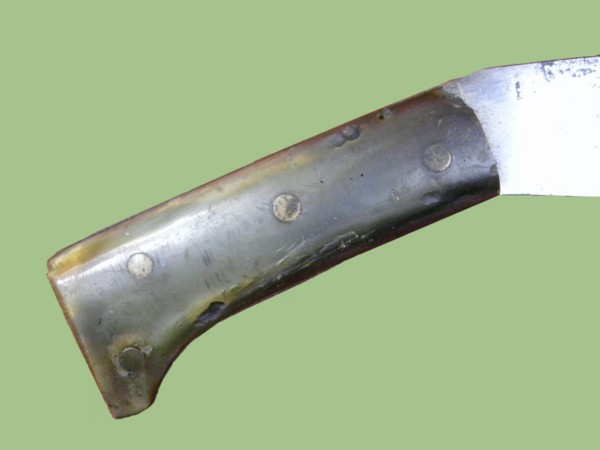
The handle of the knife is made of a bone-like material. Three rivets are placed in a line and a fourth is placed
at the beak of the pommel. These rivets secure the handle to the tang of the knife.
The knife has markings stamped on it just a few inches out from the base. It is important to know that not all the
blades were stamped with markings. It is possible to find an authentic WWI US Army Corps of Engineers bolo knife that
is not marked at all.
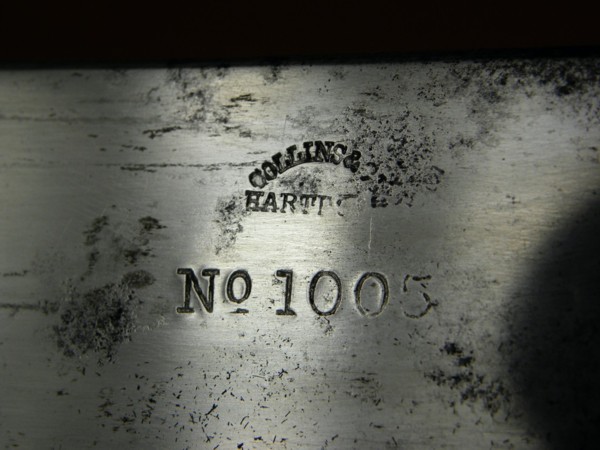
The example featured here is marked on one side of the blade with the words "Collins, Hartford" and followed by the
serial number 1005.
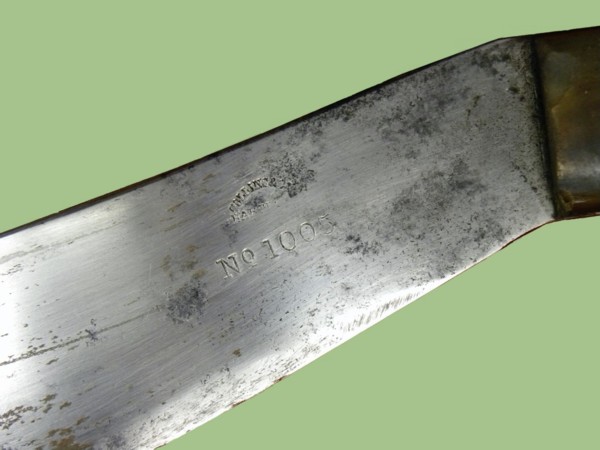

The scabbard is made of brown leather with brass sections in the throat and tip areas. The workmanship is not the best.
It ressembles the quality seen in cheap scabbards imported from Pakistan or India. The brass components tend to dent
easily. The tip section often comes apart, specially at the end.
The main body is decorated with circular designs. The center front bearsthe crown and raised arm which is the logo for
the Collins company. These designs are not applied very strongly. They tend to dissappear over time. In some cases
the scabbard was only decorated with the comnpany's logo.
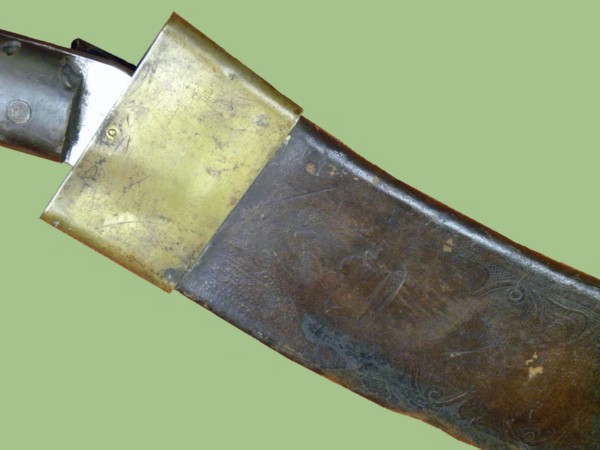
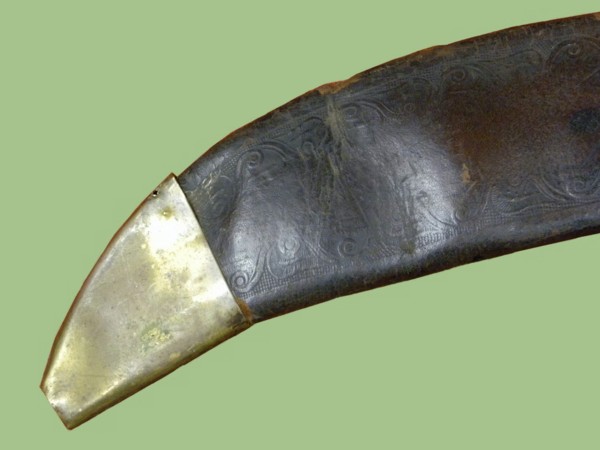

This edge weapon is currently being reproduced.
It is becoming more difficult to be able to tell the fake ones from the real ones because
the quality of the reproductions is improving. The collector must become familiarized with
the construction style and materials employed in the manufacturing of this item.
Attention to the details is critical in order to be able to determine the authenticity of
the collectible.
If you have an interest is seeing other fighting knives, you can do so by going to our
Military Fighting Knives Price Guide
identification guide. Where we cover Army, Navy, Army Air Force, USMC and other organizations.
|







